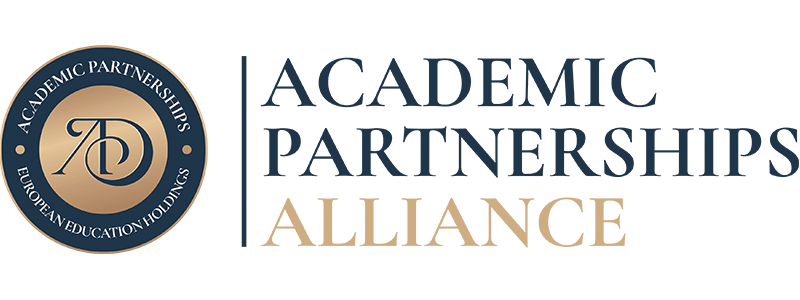Strategic planning in education is a systematic, proactive process that helps educational institutions set priorities, focus resources, and ensure that all stakeholders are working towards common goals. It is an essential tool for guiding decision-making, allocating resources, and measuring success. Strategic planning can be applied to various aspects of education, including curriculum development, professional development, budgeting, and facilities management.
The primary purpose of strategic planning in education is to create a roadmap for the institution’s future. This roadmap is based on a thorough analysis of the current situation, an understanding of the institution’s strengths and weaknesses, and a clear vision for the future. By engaging in strategic planning, educational institutions can better anticipate and respond to the needs of their students, staff, and community while navigating the ever-evolving educational landscape.
Strategic planning in education is not a one-time event. Instead, it is an ongoing process that requires regular review and adjustment. As circumstances change and new opportunities and challenges emerge, the strategic plan must be updated and refined to ensure that it remains relevant and effective.
Key Elements of Education Strategic Plans
There are several key elements that must be considered when developing education strategic plans. These elements provide the foundation for a successful strategic planning process and help ensure that the resulting plan is comprehensive, coherent, and actionable.
- Mission and Vision: The mission statement outlines the purpose of the institution and the values that guide its work. The vision statement describes the desired future state of the institution and serves as a rallying point for all stakeholders.
- Goals and Objectives: These are the specific, measurable outcomes that the institution aims to achieve within a defined timeframe. They should be aligned with the mission and vision and should be achievable with the resources available.
- Strategies and Action Plans: Strategies are the broad approaches that will be used to achieve the goals and objectives. Action plans are the specific steps, activities, and timelines for implementing the strategies.
- Stakeholder Engagement: The input and support of stakeholders, including students, parents, staff, community members, and partners, are essential for the success of education strategic plans. A strong plan should involve stakeholders in the planning process and ensure ongoing communication and collaboration.
- Monitoring and Evaluation: To ensure that education strategic plans are effective, institutions must establish processes for monitoring progress, evaluating the success of strategies and action plans, and making adjustments as needed.
Steps to Create an Effective Strategic Plan in Education
Creating an effective strategic plan in education requires a systematic, collaborative approach that is grounded in research and best practices. The following steps provide a framework for developing, implementing, and evaluating education strategic plans:
- Conduct a Situational Analysis: Gather and analyze data on the current state of the institution, including student performance, staffing, resources, and community demographics. This will help identify strengths, weaknesses, opportunities, and threats (SWOT analysis) that inform the strategic planning process.
- Develop a Vision and Mission: Engage stakeholders in a collaborative process to develop a shared vision for the future of the institution and a mission statement that articulates its purpose and values.
- Identify Goals and Objectives: Based on the situational analysis and vision, establish specific, measurable, achievable, relevant, and time-bound (SMART) goals and objectives that will guide the institution’s work over the next several years.
- Develop Strategies and Action Plans: Identify the strategies that will be used to achieve the goals and objectives, and create detailed action plans that outline the specific steps, activities, and timelines for implementation.
- Allocate Resources: Determine the financial, human, and physical resources needed to implement the strategic plan and make sure they are available and allocated appropriately.
- Implement the Plan: Put the strategies and action plans into action, ensuring that all stakeholders are aware of their roles and responsibilities.
- Monitor and Evaluate: Establish processes for tracking progress, evaluating the success of strategies and action plans, and making adjustments as needed to ensure continuous improvement.
Setting Goals and Objectives in Strategic Planning
Goals and objectives play a critical role in education strategic plans, providing a clear direction and measurable targets for the institution. When setting goals and objectives, it is important to consider both short-term and long-term outcomes and to ensure that they are aligned with the institution’s mission and vision.
A helpful framework for setting goals and objectives is the SMART criteria, which stands for Specific, Measurable, Achievable, Relevant, and Time-bound. SMART goals and objectives are:
- Specific: Clearly defined and focused on a particular aspect of the institution’s work.
- Measurable: Quantifiable, allowing for progress to be tracked and success to be evaluated.
- Achievable: Realistic, given the resources and constraints of the institution.
- Relevant: Aligned with the institution’s mission, vision, and priorities.
- Time-bound: Associated with a specific timeframe for achievement.
By establishing SMART goals and objectives, educational institutions can create a roadmap for success that is clear, actionable, and results-oriented.
Implementing and Monitoring the Strategic Plan
Once the education strategic plan has been developed, it is essential to implement and monitor it effectively. This requires ongoing communication, collaboration, and accountability among all stakeholders.
Implementation of the strategic plan involves putting the strategies and action plans into action, ensuring that all stakeholders are aware of their roles and responsibilities. This may involve providing professional development, reallocating resources, or revising policies and procedures to support the plan’s goals and objectives.
Monitoring the strategic plan involves tracking progress towards goals and objectives, evaluating the success of strategies and action plans, and making adjustments as needed to ensure continuous improvement. This may involve collecting and analyzing data on student performance, resource allocation, and stakeholder feedback, as well as conducting regular reviews of the plan.
By implementing and monitoring the strategic plan effectively, educational institutions can ensure that they are making progress towards their goals and objectives and continuously improving their performance.
Conclusion and Future Trends in Strategic Planning in Education
Strategic planning in education is an essential tool for navigating the complex and rapidly changing landscape of education. By engaging in a systematic, proactive process that involves stakeholders, sets clear goals and objectives, and monitors progress and outcomes, educational institutions can ensure that they are well-positioned for success in the coming years.
As the educational landscape continues to evolve, strategic planning will likely become even more important. Future trends in strategic planning in education may include a greater emphasis on technology integration, personalized learning, and collaboration with external partners, as well as a focus on addressing the diverse needs of students and preparing them for the demands of the 21st-century workforce.
By mastering the art of strategic planning in education and staying abreast of these trends, educational institutions can adapt and innovate to better serve their students and communities.
In conclusion, strategic planning in education is a critical tool for educational institutions to navigate the ever-changing landscape of education. By engaging in a collaborative, data-driven process that involves all stakeholders, institutions can set clear goals and objectives, develop actionable strategies and action plans, and monitor progress towards success. The infographic breakdown of strategic planning in education provides a useful visual reference for the key elements and steps involved in the planning process. As the educational landscape continues to evolve, strategic planning in education will become even more important, requiring institutions to adapt and innovate to better serve their students and communities.
Source: European Education Holdings – Academic Partnership Alliance


